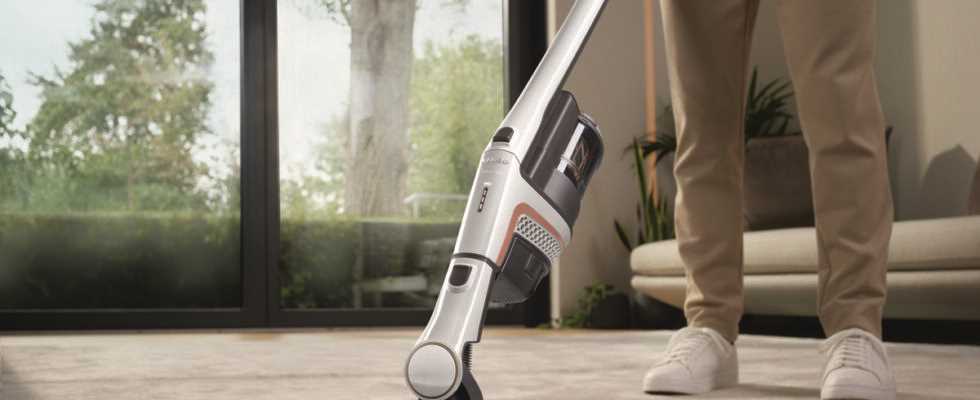It was during IFA 2019 that we were able to discover Miele’s first cordless stick vacuum cleaner, the Triflex HX1, a very special model which owes its name to its extreme modularity. Indeed, classic stick vacuum cleaners are divided into two main categories. On the one hand, the multifunction models have their heavy elements (motor, collector, filtration system) located near the ground, and you can often detach this part of the main handle to take advantage of a handheld vacuum cleaner. On the other hand, stick vacuum cleaners (of which the Dyson are the most illustrious representatives) see these same heavy elements placed near the user’s wrist. They can therefore be oriented in all directions, without too much muscular effort, with or without the suction tube, to dust off hard-to-reach corners. Thanks to clever construction, the Triflex falls into both of these categories; you can place the main group either at the top of the suction tube (in stick mode), or lower, between the tube and the suction head (in multifunction mode).
The HX2 still benefits from this trick, but it must be admitted that the differences with the HX1 are very minimal. The new version accommodates a “Digital Ef! ciency” motor which, according to the manufacturer, adapts its power according to the surface on which the vacuum cleaner evolves. The power will increase on high pile carpets while it will decrease on hard floors, without user intervention. This is not the first time this technology has been deployed; the Dreame T20 Mistral benefits from this, in particular.
Another advancement, the suction head of the Triflex HX2 has a ramp of LEDs to illuminate the areas under the furniture to easily identify dust. This feature is also very useful on dark ground.
Except for these minor improvements, the Triflex HX2 remains very similar to the HX1. The filtration system has not changed and it is still a monocyclonic system which must separate the air from the dust. Miele has also retained the system of diodes to indicate the level of remaining autonomy; a percentage or minute estimate (as on the Dyson V11) would have been welcome. More annoying, the impractical collector drain system does not seem to have evolved.
As was the case for the HX1, the HX2 is available in many versions from the most affordable (called Flash), launched at 600 € and provided with only a few accessories, to the most expensive (stamped Pro), stuffed with brushes and elbows of all kinds and for which you will have to pay 850 €.
